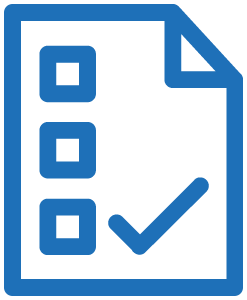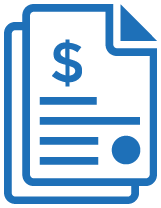Annual Requirements for the ROBS Structure
Now that your business is set up, let’s take a look at the annual requirements needed to keep your Rollovers for Business Start-ups (ROBS) structure in compliance with IRS and DOL regulations.
Adding ROBS Annual Requirements to Your Yearly Planning
Even after your new business is operating, it’s important to remember the are annual requirements that keep your Rollover for Business Start-ups (ROBS) structure and 401(k) plan in compliance with the IRS and DOL. It’s easy to forget with the hustle and bustle of starting a new business, but you should plan these requirements as part of your annual process.
It’s crucial to remember that even in the unfortunate event your business closes or is sold, you still have these annual obligations. During the setup process, you’ll choose when your 401(k) plan year ends. The annual requirements are based on this plan year end — so they might come due after the close of your business. In the case of closing your business, you’ll need to officially delegate the change to the IRS and close your files.
It’s also essential to remember that you need to file corporate taxes for your business on your own. Guidant’s Plan Administration services are to ensure your 401(k) plan remains compliant with the IRS – not to file your business’s corporate taxes. Some mistakenly believe our Plan Administration services will file your corporate taxes. Or, because we ask about taxes, that your 401(k) is being taxed. Neither is accurate.
All this information is important to remember during your annual processes. Even if you aren’t working with Guidant, a reputable ROBS provider will have a Plan Administration team to help you keep your 401(k) plan in compliance.
Plan Administration Services at Guidant Financial
Due to the complexity of ROBS, you’ll want an expert by your side to assist with your yearly compliance process. This process makes sure you’re meeting IRS compliance regulations, which ensures you don’t receive a taxable distribution.
Like all things IRS-related, the official compliance language can cause confusion. It’s important to clarify these terms so you can understand your business needs.
Plan Administrator – YOU are your 401(k) plan’s Plan Administrator. Because you’re the owner of the business that’s offering the 401(k), you’re the one that’s is administering it. You’re ultimately responsible for making sure the plan is correctly operated.
Plan Administration – Guidant Financial (or whichever third-party administration firm you hire) handles the plan administration. Plan Administration providers take care of the required reviews and reporting so you can file your Form 5500, among other duties.
The small difference between a Plan Administrator and Plan Administration is important to clarify upfront. As we go cover what to expect from Guidant’s Plan Administration services, we’ll reference both terms.
If you choose to work with Guidant Financial, our Plan Administration team will oversee the paperwork and compliance checks required to make sure your 401(k) plan is compliant with the ROBS arrangement. This involves the preparation of the Form 5500 with a full Annual Plan Report and Statement of Value. Form 5500 is the key annual return that reports the assets within the 401(k) plan. Form 5500 shows the IRS and DOL that your plan and ROBS structure are in compliance.
We’ll need some information from you to prepare these documents. When the time comes, we’ll tell you how to submit the information – which you’ll do online in our Client Portal.
While not all-encompassing, here’s what we usually need from clients:

Year End Summary
In the Client Portal, you’ll answer some basic questions about your 401(k) activity during each plan year. The questions are a combination of Yes or No answers and high-level financial info.

Employee Census
You’ll provide information about your employees. We’ll guide you through what information you need – here’s the typical info:
- Name
- Social security number
- Hours worked
- Compensation
- Date of birth
- Date of hire
- Date of termination

Financial Info
We’ll ask for your Profit & Loss Statements and Balance Sheets. We use these documents to help us produce an annual business valuation. That valuation lets us determine what your stock investment is worth on an annual basis.

Investment Management Statements
If you or your employees make any deferrals into the 401(k) plan, we’ll need statements from your custodian. These statements show the funds contributed to the 401(k).
Guidant is responsible for preparing the Form 5500 and helping you, the Plan Administrator, file it with the IRS and DOL. If your Annual Report shows your plan needs corrections to keep compliant, you’ll be responsible for following the instructions we lay out.
With Guidant’s Plan Administration Services, you don’t have to navigate all this on your own. Your Plan Administration team will email you reminders to submit info to the Client Portal, and be there to answer questions you have along the way. Guidant is always here to make sure you remain in compliance with the IRS and DOL.
Below is a comprehensive list of annual items you’ll need to complete every plan year. These are based on 401(k) plan requirements and corporate/C Corp requirements:
401(k) Ongoing Requirements
Sign All Documents
You have to sign all legal documents yourself – even the documents your Plan Administration team prepares, like the Form 5500. Your Plan Administration team can’t sign these documents for you.
401(k) Plan Management
A technical rule for ROBS is the retirement plan needs to be an Eligible Individual Account Plan (EIAP). A 401(k) plan is the most common example of an EIAP. It’s the type of retirement plan used with the Guidant 401(k) structure.
As an employee, you’ll be able to contribute to the 401(k) from your salary. As the employer, you can also elect to make profit-sharing contributions to employees who participate in the 401(k). Or you can match a percentage of the employee’s deferral. All participating employees must be treated equally with respect to the benefits, rights, and features of the 401(k) plan. That means the plan must be managed to ensure you’re in compliance with this requirement.
Business Valuation & IRS Form 5500
Like a business, 401(k) plans operate on a yearly schedule and have a plan year end. For most of our clients, the plan year end is either June or December. Within seven months of the plan year end, you need to file a Form 5500 with the IRS and DOL. Form 5500 is an informational return. It tells the IRS and DOL the current value of all the plan assets, including the Qualified Employer Securities (QES) you originally purchased. To determine the year end value, you’ll need a business valuation. A business valuation shows the worth of the stock and any other assets your corporation holds.
If you choose Guidant to help with your Plan Administration, we’ll facilitate the preparation of the Form 5500. One of the requirements of the Form 5500 is that a value must be placed on the assets of each participant’s account. While Guidant can perform an estimated statement of value based on the information you provide to us, you might need to get a written appraisal of the value of the QES in your account. We’ll figure out if such an appraisal is necessary to have a reasonable basis for the determination of the value.
Prepare Corporate Taxes & Sign All Documents
It’s important you remember that your corporate taxes are different than your obligation to file the Form 5500 each year. Don’t forget to prepare and submit your corporate taxes on an annual basis (Guidant does not offer this service). Forgetting this can result in fines from the IRS.
It’s also important to remember that you’ll need to sign all documents related to forming and maintaining your corporation. Your 401(k) Plan Administrator can’t sign these documents for you.
Your Salary and 401(k) Participation Requirements
To be eligible to use Guidant’s 401(k) structure, you have to take a salary of at least minimum wage under your local laws. You’ll need to take that salary as soon as the corporation’s business operations can support it.
You also have to work for your corporation for at least 500 hours per year – roughly 20 hours a week. You should start taking your salary as soon as your business can reasonably afford it.
We encourage you to contribute at least one percent of your salary to your 401(k) plan to grow your retirement fund. Besides benefiting your future, contributing also shows that you’re acting in your plan’s best interest.
All these operating requirements apply to anyone who contributes retirement funds in Guidant’s 401(k) plan structure. Contributions to your 401(k) plan can only start on the next entry date after you satisfy the minimum eligibility requirements.
Read more about paying yourself a salary when using ROBS.
Bonding Requirement
Under 2010 guidance from the IRS, all 401(k) plans that contain Qualified Employer Securities or aren’t wholly owned by a single participant and spouse, must maintain an ERISA Fidelity Bond at all times, regardless of non-owner participation in the plan. As we discussed in Chapter 1, ERISA is the Employee Retirement Income Security Act, one of the laws that allow for ROBS.
This requirement applies to most of our client’s 401(k) plans used to create the ROBS structure. A Fidelity Bond is a form of specialized insurance aimed at preventing certain losses to retirement plans. ERISA regulations require that your plan is insured by an “ERISA bond. An ERISA bond has a bond amount equal to 10 percent of plan assets, or $500,000, whichever is less. As part of your onboarding process with Guidant, we’ll provide recommendations on how to get the bond and what type of bond you need. All plans that have QES must have a bond – that bond is reported on the annual Form 5500.
C Corporation Ongoing Requirements
You Must Do Your Taxes Annually & Sign All Documents
Your corporate taxes are different than your obligation to file the Form 5500 each year. Don’t forget to prepare and submit your corporate taxes on an annual basis. Forgetting this can result in fines from the IRS.
State Level Requirements
Each state has its own initial and ongoing requirements to maintain your corporation. Some of the ongoing maintenance requirements are listed state-by-state on these state checklists.
Retention of Local Business Attorneys and Other Professionals
It’s a good idea to work with a business attorney to address the common legal needs that arise in the course of running a small business. You’ll also likely want to work with a CPA or other tax advisor to handle any tax matters for your business.
C Corporation Maintenance Requirements
As we covered in earlier chapters, the business entity used to set up a ROBS arrangement must be a C Corporation. Pass-through entities like LLCs or S Corporations aren’t permitted with the ROBS structure because they can’t issue private stock.
If you need more information about business entities and their maintenance requirements, please contact a tax professional.
Additional Entity Structuring
You can’t change your corporate type from a C Corp while you have the 401(k) plan invested in your corporation. Establishing additional entities and/or restructuring the entities already in existence could result in a prohibited transaction, disqualification of the plan, and/or significant tax penalties. It’s essential to contact Guidant or your Outside Counsel before establishing addition or different entities or changing your business type. If you’re working with a tax or legal professional, they must take federal tax and ERISA law into consideration when advising you with respect to the Guidant 401(k) structure.
The Operating Company Requirement
The business entity your retirement plan invests in must meet the definition of an operating company. An operating company is an entity that either directly or through a majority-owned (51 percent or greater) subsidiary sells a product or service, where the product or service sold doesn’t constitute the investment of capital. For example, businesses that don’t meet the operating requirements include factoring services businesses, investment advisors, venture capital firms, and day traders. Also included are real estate investment companies that don’t meet the Real Estate Operating Company (REOC) criteria.
Pre-Qualify Today!




















